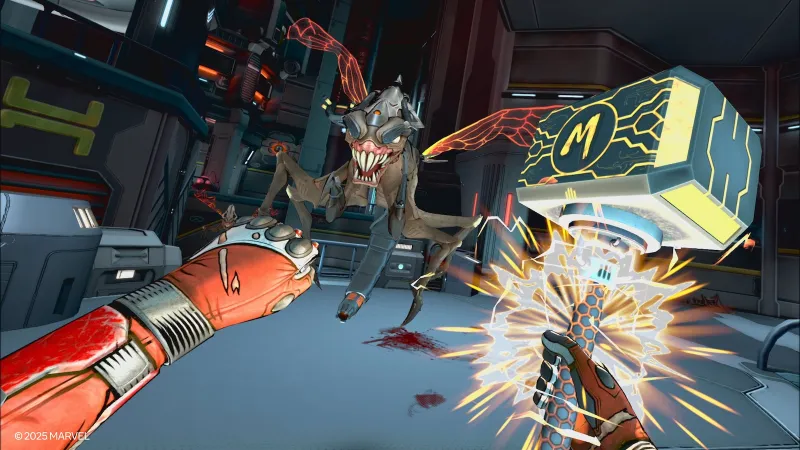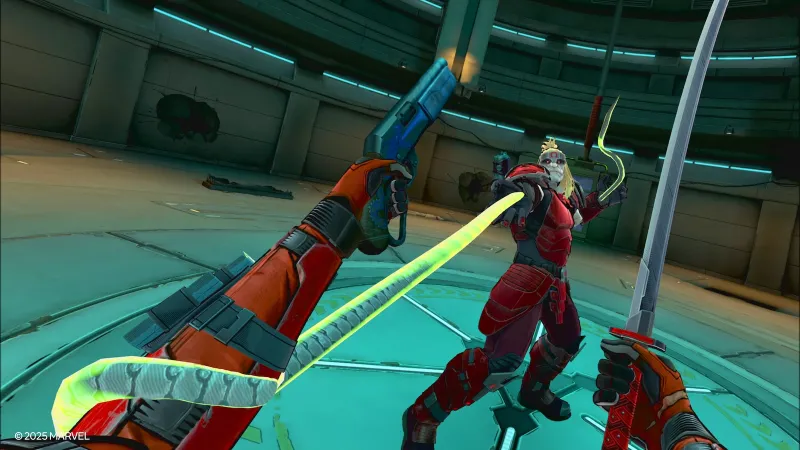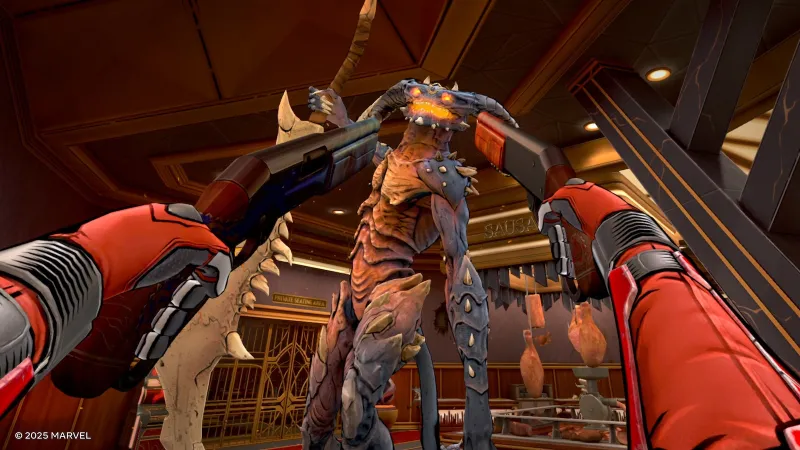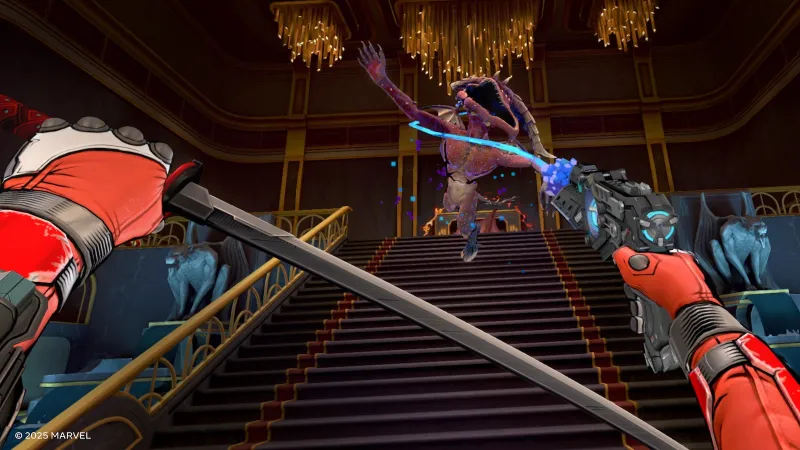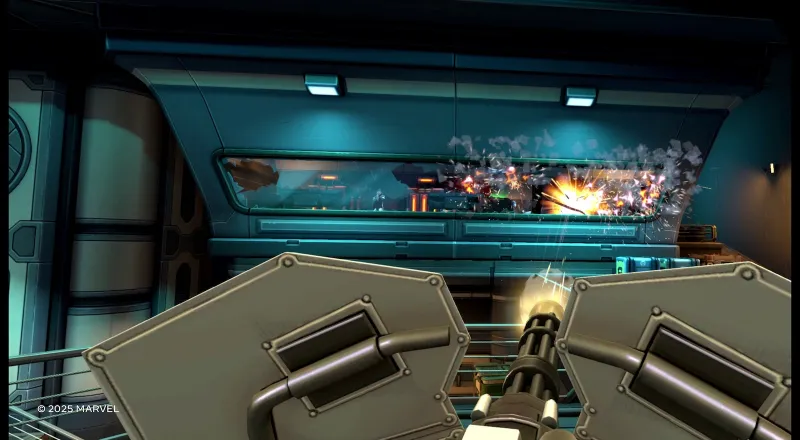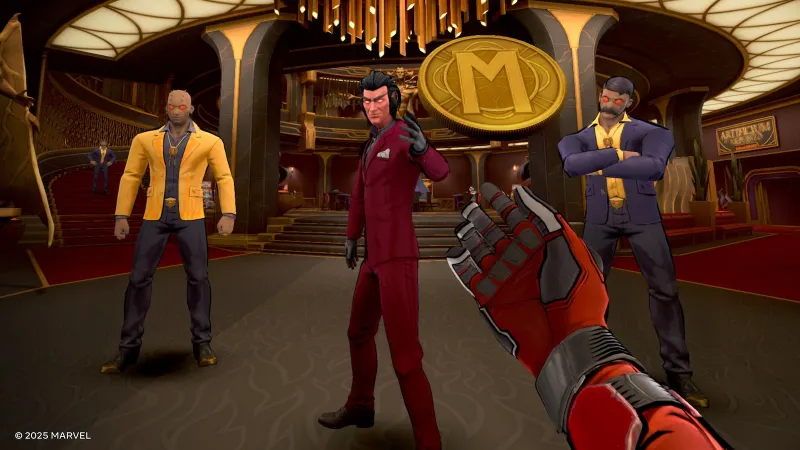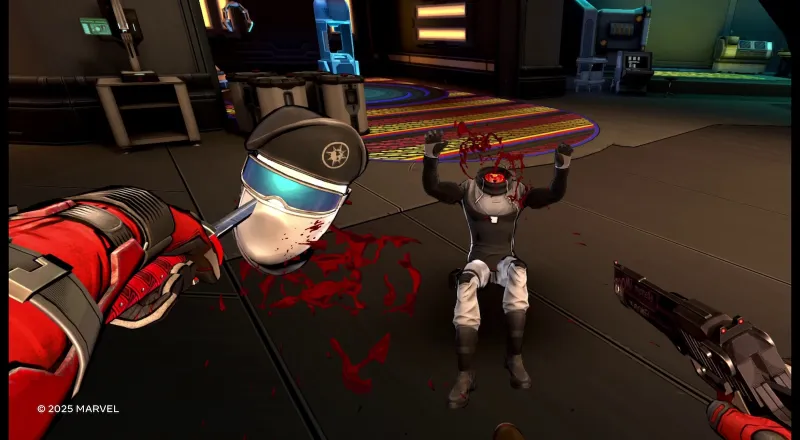Reading List
The most recent articles from a list of feeds I subscribe to.
Marvel's Deadpool VR Review - Mileage May Vary
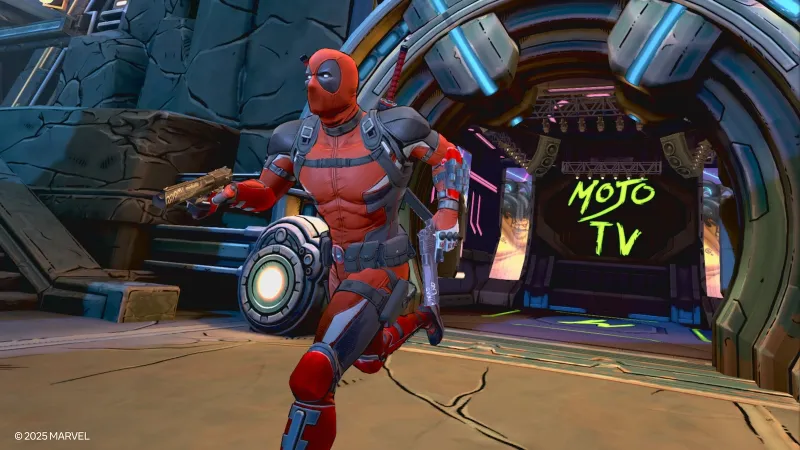
Reviewed on:
Quest 3
Platform:
Quest 3
Publisher:
Oculus Studios
Developer:
Twisted Pixel
Release:
Rating:
Mature
The character of Deadpool is divisive. He’s not a hero that many have neutral feelings for. You either appreciate his caustic, perpetual dialogue and complete disrespect for the fourth wall, or his vulgar and violent attitude will never win you over and you’re done giving him the opportunity to try. I am among the small percent who does often tire of Deadpool’s schtick, but am happy to give it up for the jokes that absolutely work on me. His virtual reality video game fares similarly to his appearances in other media. Both the dialogue and gameplay sometimes grated on me, but there are a number of impressive moments and the occasional strong joke that surprised me and made me laugh.
You are, unsurprisingly, inside the head of Deadpool in Deadpool VR. What begins as a freelance job to return the SHIELD Helicarrier to its rightful owners turns into participation in an intergalactic reality show to travel the universe and collect B-tier Marvel villains and make them fight for a different B-tier villain, Mojo. The story is straightforward to the point that Deadpool calls out its predictable nature often, but that’s okay, because Deadpool VR is not about the plot. It’s about personifying the Merc with a Mouth, sometimes to a fault.
The amount of dialogue in Deadpool VR is staggering. And it’s made all the more impressive when you learn that each of the different variant Deadools you can replay the levels as have different lines, even in the primary story sequences. Unfortunately, the majority of Deadpool’s jokes simply do not hit, and Neil Patrick Harris’ performance vacillates between an impression of Ryan Reynolds’ take on the character, indifferent line readings, and the occasional enthusiastic embracing of a good punchline.
The jokes that worked for me were the ones that dug into obscure video game references and ridiculed design, like poking fun at doors inexplicably unlocking when you kill enough bad guys. It’s too bad the game isn’t available on PlayStation VR2 where my constant eye rolling over jokes that did little more than reference pop culture could be tracked. But when Deadpool waxes poetic about how Vanquish was underrated or wonders out loud what Jeff Minter-flavored ice cream might taste like during a level inspired by Llamasoft’s visual aesthetic, I can’t help but admit I was charmed. But the hit rate is overall lower than I’d like.
Actually playing as Deadpool is a matter of using his twin guns or twin swords with the occasional grenade thrown in for good measure. Combat is frantic to the point of me turning up the VR comfort settings a little more than I usually do, but I enjoyed pulling off impressive kills. Jumping in the air to kick off a bad guy’s head and grab his dropped gun out of the air in slow-motion to shoot his cohorts feels good, but it’s a move I pulled off a lot. I also am generally tired of swinging swords in VR. I don’t find the action fun in just about any VR game, and Deadpool VR is no different. Thankfully, gunplay is solid and a totally viable way to tackle most encounters.
The combat highlights come in the boss fights, which aren’t particularly challenging, but are fun exercises in superhero choreography that I always looked forward to. Between the levels where you pursue and defeat bosses, however, are battles intentionally designed to feel like online modes in multiplayer maps played against bots. Playing through those sequences always felt like trudging through the lame parts to get to the fun parts. It made the last act of the game, an extended set of back-to-back battles against the collected bosses on those types of levels, disappointing.
Your mileage in Deadpool VR will really depend on your patience with the character. Developer Twisted Pixel nails the tone and rhythm of Deadpool in what he talks about, how much he talks, and how he can’t be bothered to take anything seriously. It can be annoying, but there are good jokes, and the action mostly stays fresh. The frequent combat rooms get redundant, but there are impressive on-rails sequences and even a handful of fun-but-simple VR puzzles to keep most elements from overstaying their welcome. I just can’t in good conscience say the same for the character himself. And I am sure he will be mad at me for it.
Score: 7.75
The Video Games You Should Play This Weekend – November 14
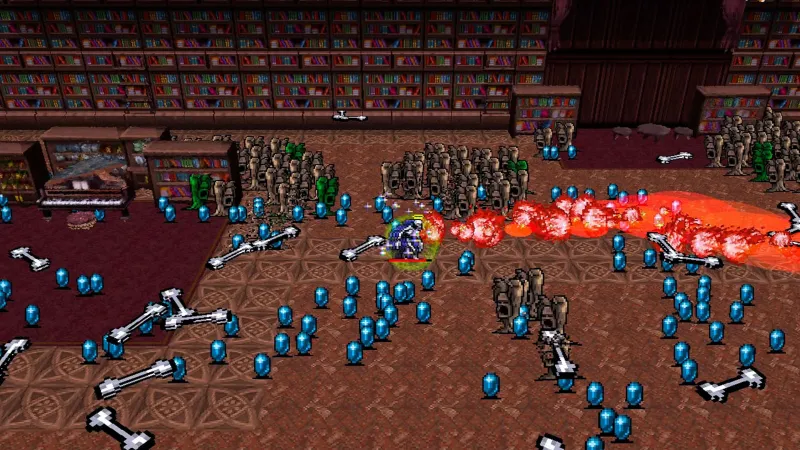
November is sprinting along at a pace that does not make sense in terms of the way time moves along. I have looked into who I should email to try and slow things down, but I have had no luck. We can see the light at the end of the tunnel for the sprint of major releases at the end of the year, but now the backlog is a mile high, and we need to start making some end of the year best of decisions.
Speaking of which, head here to vote for your favorite games of the year! I recognize it's a little early to choose, but such is the burden of working in print. We don't mind, though. We like magazines.
Anyway, it's Friday and it's time for the weekend and our usual recommendation of games and things you should check out! But before that, here's a recap of the biggest stories of the week:
- Valve Announces Console-Like Steam Machine, Steam Frame VR Headset, And New Steam Controller
- Everything We Learned In Nintendo's Direct For The Super Mario Galaxy Movie
- Metroid Prime 4 Hands-On: The Mouse Controls Are Mind-Bendingly Good
- Red Dead Redemption Is Coming To PS5, Xbox Series X/S, Switch 2, and Mobile Next Month With Free Upgrade Paths
- Horizon Steel Frontiers Is An MMORPG Set In Guerrilla's Horizon Universe, And It's Coming To PC And Mobile
- Best Video Game Soundtrack Grammy Nominations Don't Include Clair Obscur: Expedition 33
The Games You Should Check Out This Weekend
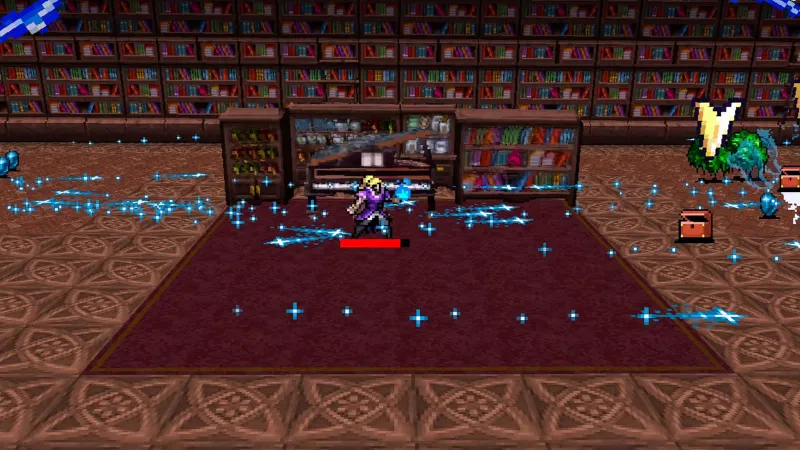
Vampire Survivors VR
In an announcement that was arguably more surprising than Valve sharing details about its upcoming console, VR headset, and new controller, Vampire Survivors is now inexplicably available for Meta Quest. I'm not the biggest VR proponent, but I am a big fan of seeing how familiar games get ported to the platform. I love Resident Evil 4 VR for Meta Quest and am sad that Grand Theft Auto: San Andreas VR appears to be dead. Hopefully, I am wrong.
In any case, I quickly downloaded it and played a few rounds and was charmed by it. Expectantly, it offers a new perspective on a game I have dumped a lot of hours into. Seeing the game (which is functionally identical to playing it on a 2D screen) laid out before you with some limited stereoscopic layering to the pixel characters and monsters is neat. It is not the new way that I will play Vampire Survivors moving forward, but I am glad it exists, and I want to see more unexpected games like this get ported to VR. My dream for a VR port? Metal Gear Solid, with its 32-bit visuals intact.
You can see a little bit of gameplay from the VR version here.
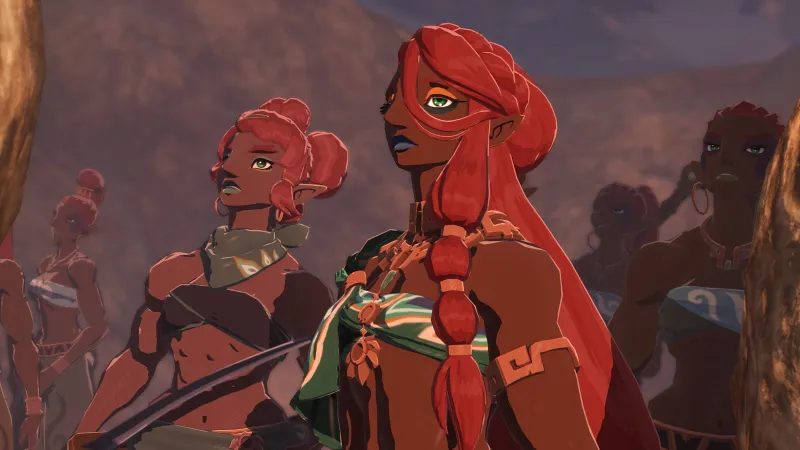
Hyrule Warriors: Age Of Imprisonment
I wrote about it last week, as well, but now I have finished it, so I am prepared to recommend it while linking to my review. If you don't like the musou genre (games structured like Dynasty Warriors), then Hyrule Warriors: Age of Imprisonment likely won't convince you. But, I can confidently say it is my favorite musou game thanks to some little tweaks that make combat more engaging. I am also a sucker for being back in the world of Tears of the Kingdom. My biggest fear about the game (and my biggest critique of Age of Calamity) was that the story would not take the events of Tears of the Kingdom seriously. Thankfully, it does here.
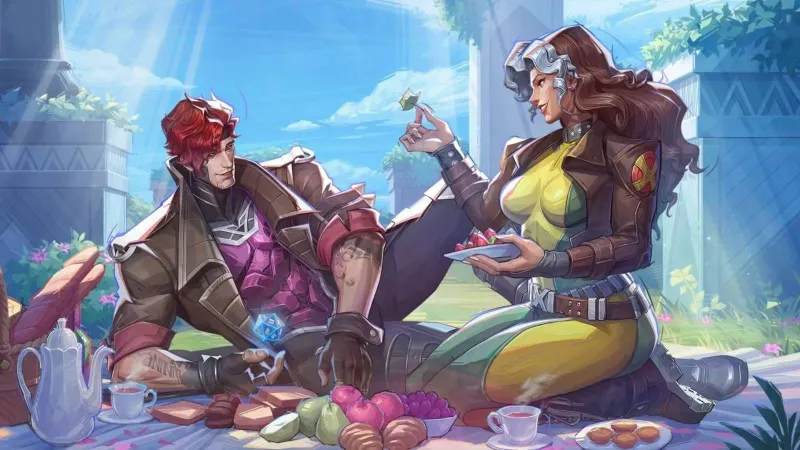
Marvel Rivals
NetEase's popular superhero team game continues to impress with the pace and breadth of its updates. Today brings the launch of the game's fifth season, along with the new playable hero Gambit. Gambit sweetheart, Rogue, is expected to arrive mid-season. The new content is also a celebration of the game's first anniversary, and includes anniversary-themed rewards for players to acquire with play. Alongside new team-up abilities, a new non-combat social space in Times Square, and plenty of new balance changes on the way, it's a good time to hop in and engage in some good old-fashioned superhero battles.
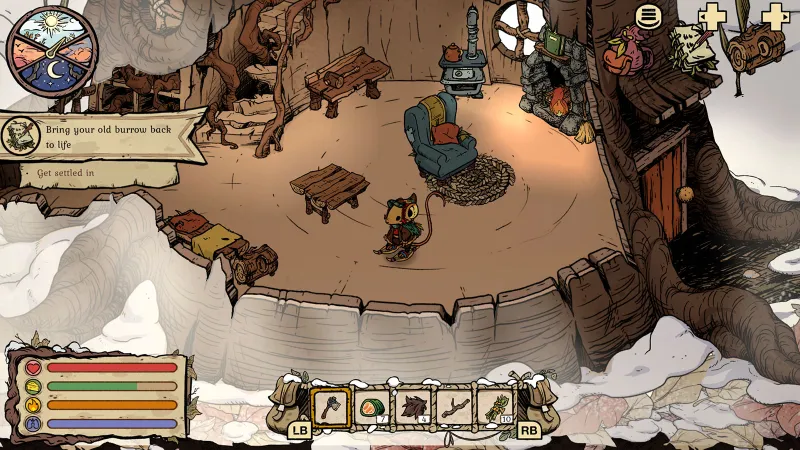
Winter Burrow
You're a mouse, and you're returning home in the depths of winter to your old cozy burrow, there to knit sweaters, cook foraged mushrooms, and explore the forest. While Winter Burrow is ostensibly a survival game, it's an awfully adorable one, where the pace and tone are both decidedly light and friendly. Your mouse protagonist makes cute squeak noises as they dig in the snow. The gameplay loop mostly involves prioritizing a return to a warm fireplace at the end of every day of gathering. Noodlecake's new game doesn't break a lot of ground in terms of complex gameplay, but it's a clear winner if you're looking for your next zone-out and relax title to cozy up next to over the forthcoming cold months.
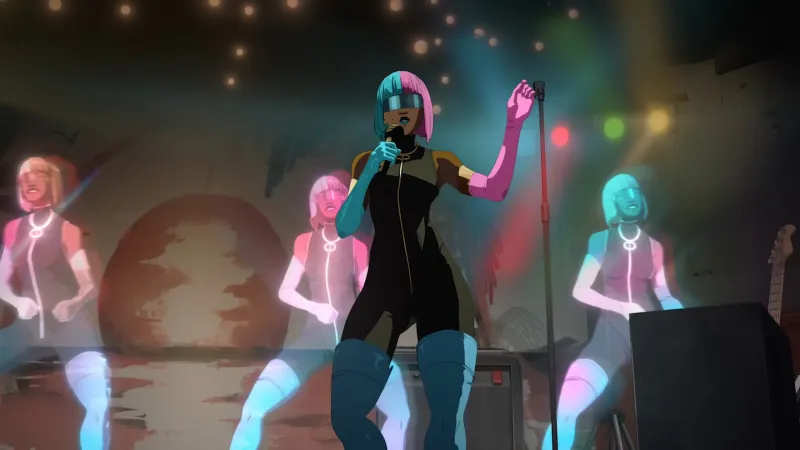
Dispatch
Dispatch is now a complete game. Its episodic release schedule has officially concluded which means you can now play (or binge) all eight of its episodes in full. No cliffhangers for you!
I, admittedly, don't usually enjoy these types of experiences. I never really got into any Telltale games despite giving many of them a shot. They're just a bit too passive for me. I like more gameplay. But I have been so enamored with the look and animation of Dispatch that I ended up playing it as new episodes released week to week and saw it to the end. It's good!
Dragon Quest 7 Reimagined, Metroid Prime 4: Beyond, And More
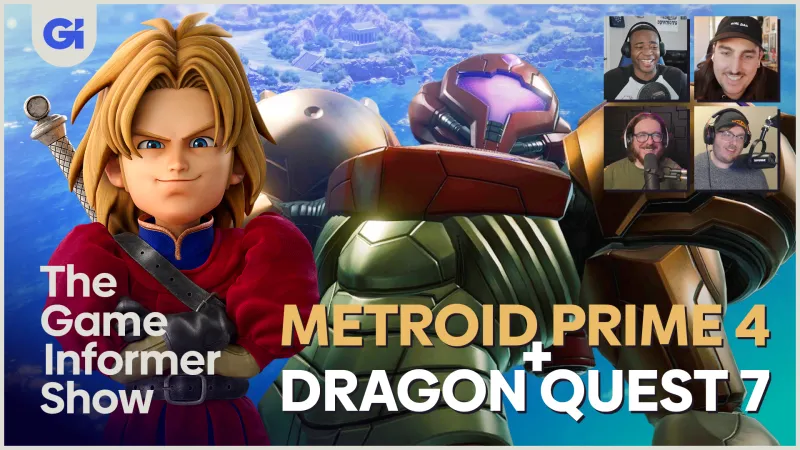
Watch the video version here:
Listen to "Dragon Quest 7 Reimagined, Metroid Prime 4: Beyond, And More" on Spreaker.Follow our guest and hosts on social media:
- Marcus Stewart (@marcusstewart7)
- Wesley LeBlanc (@wesleyleblanc)
- Kyle Hilliard (@kylehilliard)
- Eric Van Allen (@seamoosi)
Jump to a specific discussion using these timestamps:
00:00 - Intro
04:29 - Dragon Quest VII Reimagined
17:57 - Metroid Prime 4: Beyond
35:36 - Lumines Arise
47:50 - Possessor(s)
1:11:22 - Hyrule Warriors: Age of Imprisonment
How The New Voice Over Affected Dragon Quest VII Reimagined

Dragon Quest VII Reimagined is the first version of Dragon Quest VII to feature in-game voice acting, meaning characters like Sir Mervyn, Aishe, Maribel, Prince Kiefer, and even Ruff, will be voiced. Neither the original PlayStation release of Dragon Quest VII nor the 2016 3DS remake featured voice acting, so I asked Reimagined lead scenario writer if this changed how the team approached redesigning the story.
Unsurprisingly, it did.
"Knowing that it was going to have voice over certainly did change the approach of the way I wrote the narrative here," Sayaka Takagi tells me within Square Enix's Shibuya offices in Tokyo, Japan. “The original release on PlayStation didn’t have any voiceovers, and it was written [out]. So certainly, the way we wrote the language of the dialogue [in Reimagined] needed to be changed to be more realistic and more modern for modern audiences.”
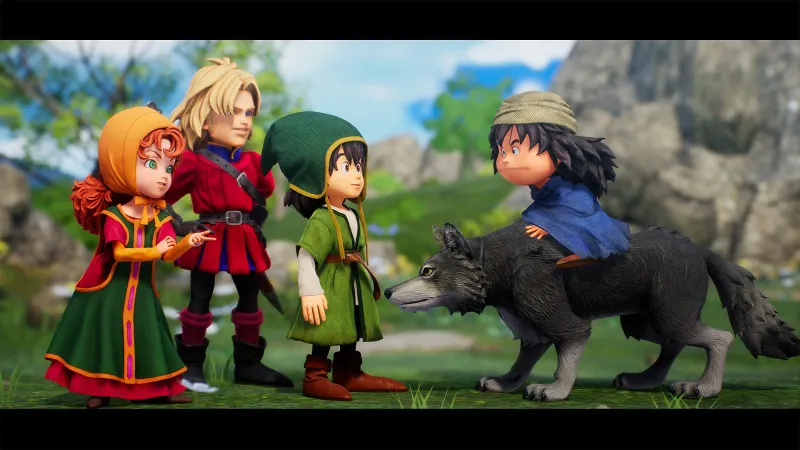
She says colloquialism played a significant factor in writing Reimagined’s dialogue, because everything needs to sound natural for the various included voice-over options.
I hear first-hand one of these changes when I encounter eventual party member Sir Mervyn at the top of The Tallest Tower dungeon while playing the game. After I awaken him from a special stone to defeat the flying Chimaera surrounding the tower, he does just that before gracefully landing beside my party. It's here I hear his voice, and it sounds like that of a medieval knight – this isn't too shocking, considering how he looks.
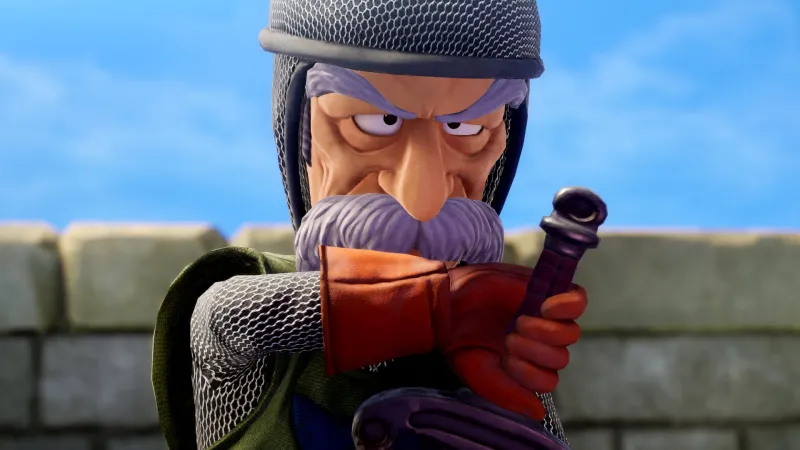 Sir Mervyn
Sir Mervyn
But in Japanese, he talks like a feudal samurai, Reimagined producer Takeshi Ichikawa, who you can read more about here, says. Another example of this colloquialist effect present in Reimagined comes from Bulgio, an extremely wealthy man who gives Hero the special stone that houses Sir Mervyn. In English, Bulgio mixes Italian words into his English, reflecting the multicultural inspiration present throughout the world of Reimagined. In Japanese, however, that's not the case – instead of mixing English and Italian, his dialogue instead reflects his character rather than a nationality.
"He's supposed to be this rich, arrogant guy, and that's reflected in the dialogue," Takagi says on the differences between the Japanese localization and the English version, noting her work is focused on the former while other teams handle the latter. "At least for the Japanese version, we didn't necessarily write dialogue in a way that you can tell what these specific cultural backgrounds are for each character, but we did write dialogue in a way that it's immediately understandable what kind of personality that character has."
Takagi adds, "The world of Dragon Quest VII, as you know, is comprised of many different islands, and obviously the dialects on each of those islands tends to differ, so it is a very important part of the story of Dragon Quest VII to ensure that the residents of those islands can reflect the uniqueness and individuality of each of those islands and the cultures they have."
We'll get to hear more of these new voices when Dragon Quest VII Reimagined launches on PlayStation 5, Xbox Series X/S, Switch 2, Switch, and PC on February 5, 2026.
In the meantime, check out this article breaking down everything in the Dragon Quest VII Reimagined issue of Game Informer, and be sure to subscribe here if you haven't yet so you can access the Dragon Quest VII Reimagined cover story, our deep dive into Dragon Quest history with creator Yuji Horii, and so much more. Here are some other stories to check out:
- Dragon Quest VII Reimagined Will Have A New Never-Before-Seen Conclusion
- Who Is Takeshi Ichikawa, The Producer Of Dragon Quest VII Reimagined?
- Here's How The Dragon Quest VII Reimagined Team Streamlined Its Main Scenario
Whose voice are you most excited to hear in Dragon Quest VII Reimagined? Let us know in the comments below!
Metroid Prime 4: Beyond Preview - Metroid Prime 4 With Mouse Controls Is Mind-Bendingly Good

Platform:
Switch
Publisher:
Nintendo
Developer:
Retro Studios
Release:
After eight long years, Metroid Prime 4: Beyond is nearing a real launch. I got the opportunity to both stand and sit down to play some of it on the Switch 2, and it feels like it hasn't missed a step in the interim.
My first playable section was a run back through the opening of Metroid Prime 4: Beyond, shown off in last year's Nintendo Direct; intergalactic bounty hunter Samus Aran arrives at a research station under attack from space pirates, and leaps off the top of her ship to assist.
After working my way through tutorials and several dozen space pirates, I eventually hit the cutscene introducing Sylux, the Metroid Prime Hunters baddie who's taking a more central role. He's important, it seems, but this is the only portion of the demo where I see much mention of him, the space pirates, or the Metroids that strangely follow his commands.
I'm guessing Sylux plays a more significant role later, but after being taken to the next demo room, I'm dropped into the thick of it: Samus, sans powers, in the new world of Viewros. Well, not all powers. The bounty hunter will have to regain abilities like Missiles and Morph Ball bombs again, but the upside is a new suite of psychic abilities, enabled by a glowing purple gem in the center of her helmet.
For puzzle-solving, this means Samus can move specific orbs and other objects with her mind to open doors and access new areas. Her bounty hunting arsenal also gets a boost from the newfound powers, too; Samus' Psychic Morph Ball bombs can be picked up and moved around before they detonate, and her Control Beam can be piloted through the air to its target.
The Control Beam is applied to both puzzles and combat as I dive deeper into the jungle zone. Shooting a Charge Shot through an opening and around to the backside of a door to open it is rewarding to pull off. A later boss fight, against a plant monster with whip-like limbs, requires me to break the shields guarding its appendages and then curve a Control Beam around the arena (like in the 2008 film, Wanted) taking out every weak spot in one go. The suite of psychic powers already seems like a standout for Metroid Prime 4: Beyond.
I tried out all the control schemes I could to get a sense of the best way to play: attached Joy-cons, a Pro controller, and the controller-plus-mouse mode. The mouse controls genuinely surprised me. There are many situations where Samus might want to lock onto an enemy but then pinpoint specific parts around its body, or even doors that had me lock on, then hit several corner areas while staying locked on the center. Mouse controls felt perfect in those moments, allowing for quick and precise targeting while on the move. I still prefer the Pro controller for general ergonomic reasons, but with a good mat, the Joy-Con mouse felt less like a novelty and more like a genuinely viable alternative control scheme.
About halfway through my venture through the Fury Green area, Samus stumbles upon a Federation fighter who's also stranded on this strange new planet. After rescuing him, he reveals he's an engineer, and starts following Samus. This companion character dynamic is interesting; for gameplay reasons, it means you have a helping hand in some combat sections, though you'll also need to keep an eye on your new friend and protect him when things get dicey.
Narratively, the engineer helps push the area progression forward by interfacing with the strange tech left behind by the Lamorn, a long-lost alien race that seems tied to everything happening on Viewros. He also provides a bit of comedic relief counter to Samus' silent, stoic stature. The dynamic is enjoyable, but I do hope it's used sparingly.
The lush foliage surrounding my starting area is spectacular. Playing Metroid Prime 4: Beyond in either handheld and docked modes look great, but the colors popped just a little more when lit up on a big screen. I looked for fault, and only saw a few stutters here and there, but never near enough to drag the experience down. The strange, dangerous flora and fauna build an incredible atmosphere. The soundtrack is excellent too, with all the musical stings and eerie ambiance you'd want from this sci-fi adventure.
Metroid Prime 4: Beyond has been an entire console generation in the making, which makes for a tough bar to clear. After spending time exploring the world of Viewros, though, Metroid Prime 4 is poised to be an exciting adventure for Nintendo's intergalactic bounty hunter. Samus' mind is expanding, but it's still the shot-charging, ball-rolling, back-tracking adventure you'd hope for in a new Metroid Prime.
